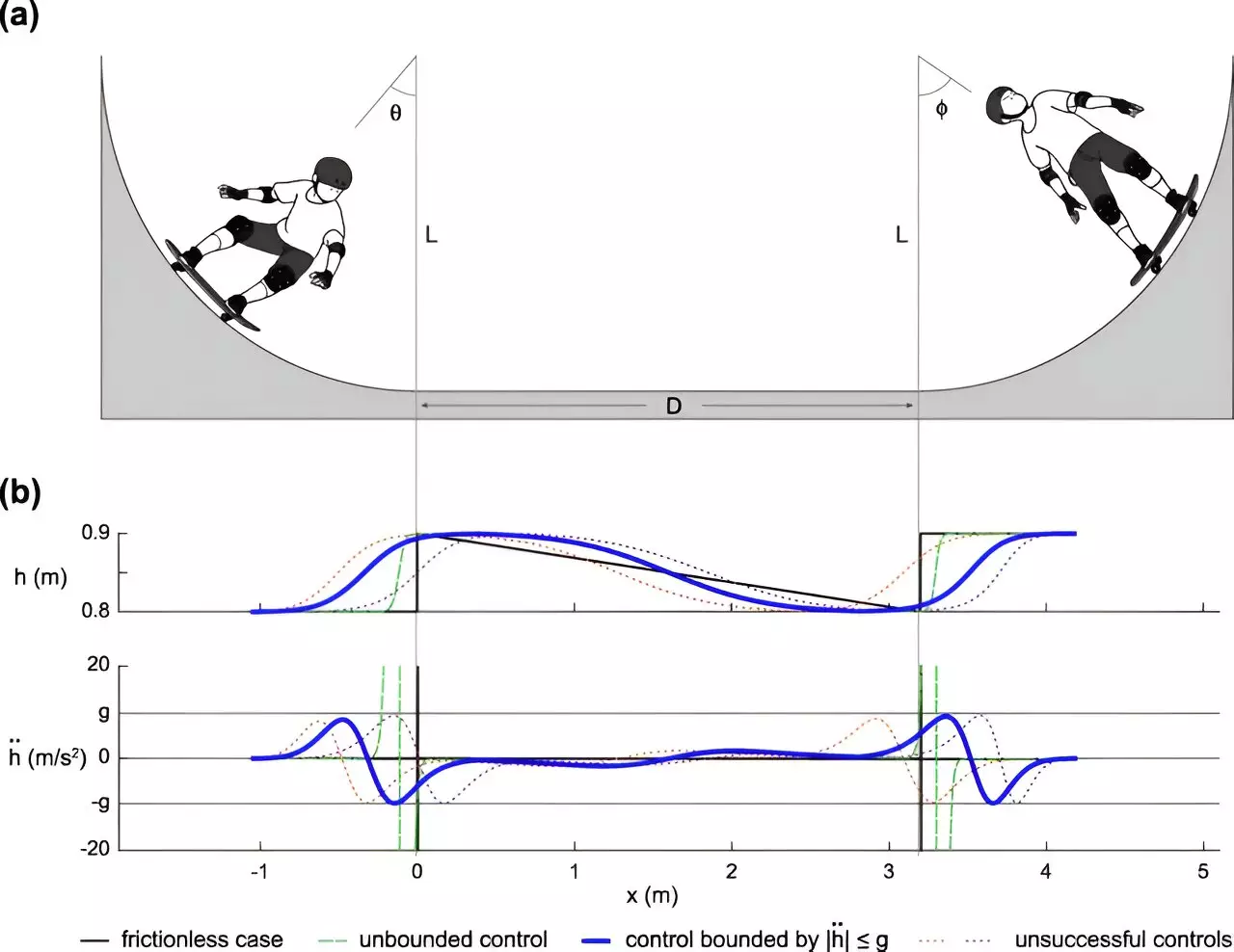Skateboarding, a sport that combines athleticism with artistry, has long intrigued scientists due to the complex physics at play. Recently, a collaborative team of engineers and mathematicians from ETH Zürich, alongside experts from The Institute of Statistical Mathematics and ATR Institute International in Japan, uncovered the intricacies of human movement on skateboards during half-pipe rides. Their findings, detailed in the journal Physical Review Research, bring valuable insights not just to the world of skating, but potentially to robotic balance and movement as well.
A skateboard half-pipe, resembling a horizontally cut cylinder, invites skaters to maneuver between its two sloped sides. At its core, the dynamics of a half-pipe involve gravitational forces, momentum, and energy transfer, making it an excellent study subject for modeling human performance. As a skater rolls down one side, they convert potential energy into kinetic energy, allowing them to gain speed. This process is cyclical; as they ascend the opposite side, they face a critical choice: jump off, or roll back down.
The act of “pumping” is crucial for maintaining momentum. This movement—crouching in the valley and then rapidly extending the body as they ascend—manipulates the skateboard’s speed. The analogy of swinging provides a familiar frame for understanding this action. Children on swings move their bodies in a way that optimizes the swing’s arc, a principle mirrored in skateboarding mechanics.
The engineering team built their model on existing physics theories regarding swings and pendulums. They analyzed video footage of skateboarders performing various tricks and movements to incorporate variables pertinent to skateboarding, such as the skater’s body mass, the tilt of the skateboard, and its interaction with the ramp surface. These elements were essential to understand how skaters effectively generate speed and height during their routines.
By constantly adjusting their body position relative to the incline of the half-pipe, skaters optimize their pumping technique. This not only propels the board but also enhances their stability while airborne. The model the team created explored these adjustments, analyzing how different movements could yield faster speeds. Surprisingly, the findings suggested that some of these optimal movements would launch a skater too high or off the half-pipe entirely. Thus, while theoretically sound, these ideal conditions diverge from practical execution in real-world skating situations.
Strategically, the model holds promise beyond recreational use. The researchers inferred its applicability in robotics, particularly in developing systems that require balance and agility while traversing uneven terrains. With robotics becoming an increasingly significant field, particularly in applications such as autonomous vehicles and exploratory drones, the ability to maintain stability while navigating slopes is paramount.
Simulating human balance mechanics through such mathematical models could dramatically enhance robot design, making them more adept at handling multifaceted environments where equilibrium is continually disrupted. This research lays a framework for further exploration, potentially leading to robots that can mimic human-like responses in dynamic settings.
This pioneering study exemplifies the intersection of mathematics, physics, and sports, revealing how theoretical models can elucidate practical human skills. The insights gained from understanding pumping techniques not only enrich our appreciation of skateboarding artistry but also represent a step forward in robotics and automated systems. As methods for modeling complex systems continue to evolve, the potential applications of informed designs could reshape how we approach both entertainment and technology, merging thrilling kinetic movements with sleek, sophisticated engineering solutions. These findings illuminate the fine balance between theory and practice, showcasing how one can enrich the understanding of the other.


Leave a Reply